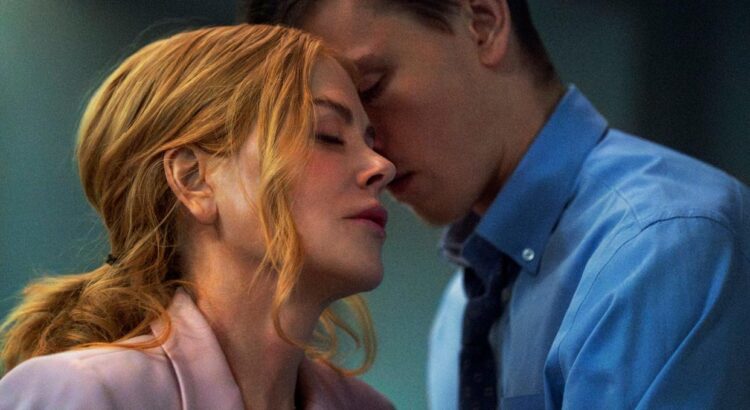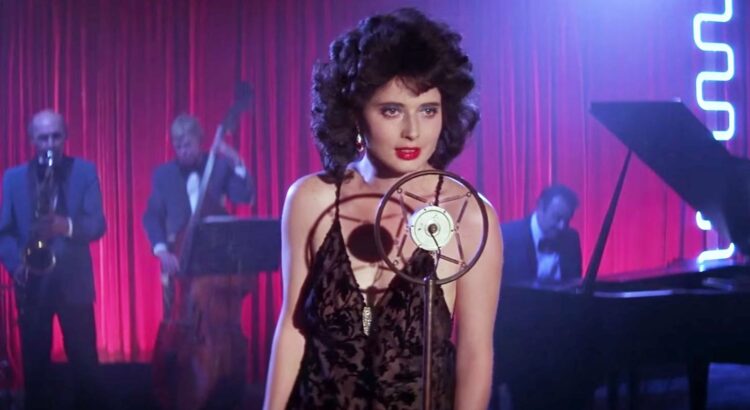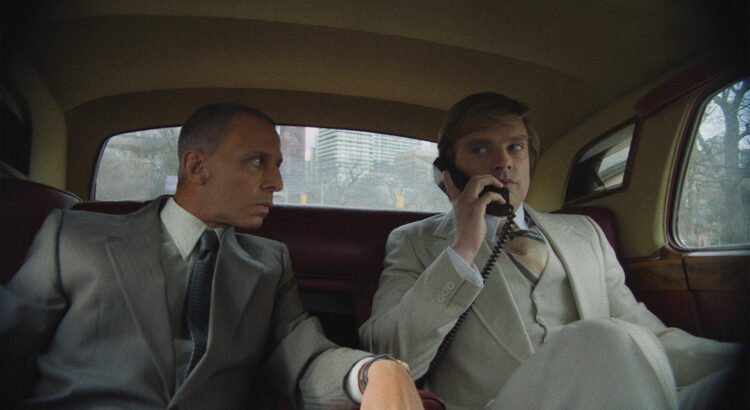O Nicole Kidman, what can’t thou do? What heights canst thou not reach?
In Babygirl, Dutch director Halina Reijn is intent on liberating us unenlightened Americans from the shackles of shame and fear. Her modus operandi is to throw us headfirst into a world of dominance and submission, of power-plays and betrayal. Without pitch-perfect performances from Kidman and her costar, the sizzling Harris Dickinson, Babygirl would flatten into cheap comedy. Yet against all odds, this movie works, turning us on and teaching us a lesson all at once.
It takes a special type of plot to have several people in the audience walk out halfway through the movie, one of them muttering “disgusting…” under her breath. Babygirl is sure to be repulsive, even offensive, to some people. The movie follows Romy Mathis – girlboss CEO of a robotics automation company, mother to two well-adjusted teenagers, and wife to an adoring husband (Antonio Banderas). Yet something is off in this charmed life. In the very first scene, Romy, after faking an orgasm with her husband Jacob, tragically and hilariously runs to another room and masturbates to cheap Internet porn. Romy has love and riches, but is hiding a shameful secret that is ruining her life: she craves submission in the bedroom. Samuel (Harris Dickinson), an enigmatic intern at her company, quickly sniffs this out. He draws her into an affair that she can’t resist, and the film snowballs from there.
Although Babygirl received generally positive reviews, the negative feedback tends to point out that actually, Romy and Samuel are villains. “In a real-life scenario, Samuel would have been instantly fired,” says the Standard. The Guardian notes that as Romy conducts her affair, “Her poor husband…is left wrangling the kids and trying to direct his latest off-Broadway show.” NPR laments that the film “…feels out of touch with our post-MeToo era.” This criticism misses the point. Babygirl is a work of fiction, not a documentary. Its purpose is to lead us out of the noose of shame and into the open air of pleasure.
For this reason, the scenes featuring only Romy and Samuel are the lifeblood of the film. In their first rendezvous, Samuel is unsure of himself but organically comfortable with giving orders. Go stand in the corner. Get down on all fours. Eat this strawberry-flavored candy out of my hand. “You’re mine,” he says without words. The scene is a potent mix of awkwardness and passion. It works because Samuel is neither a sadist nor a douchebag. Unlike the infamous Christian Grey, who “likes to whip little brown-haired girls like you because you all look like the crack whore—my birth mother,” Samuel wears his power well. Samuel knows what he’s doing.
In another scene, a nervous Romy invites her lover to a fancy hotel room. She follows his directions, taking off her dress and getting on her knees in front of him. The scene changes, and suddenly it is Samuel performing for her, swaying to George Michael’s “Father Figure” as Romy’s eyes follow his body. This is the female gaze at its best, and Samuel is its perfect recipient. Here is someone comfortable in his own skin. Here is someone who knows that what he puts out will be well-received. Reijn’s talent is channeling just the right combination of danger and allure. Beauty, power, dominance – it doesn’t take much to convince the audience that these are virtues to be admired.
There are certain aspects of this movie that I think are superfluous. Reijn alludes to Romy’s childhood, which was apparently full of cults and gurus, in engineered EMDR therapy sessions. Romy’s assistant ends up discovering the affair and extorting Romy for a promotion. There is a girl-boss final moment that feels contrived. None of these B-plots are necessarily bad, but they’re a distraction from the central theme: what Romy wants and what Samuel can give.
When the pair are inevitably caught, culminating in a violent altercation between Jacob and Samuel, Jacob is distraught that his wife would be enraptured by such cheap thrills like submission. “Female masochism is nothing but a male fantasy,” he mutters through tears. “No, you’re wrong. That’s a dated idea,” says Samuel, to the man he has just cuckolded. The people agree, Harris Dickinson. Give the people what they want.











